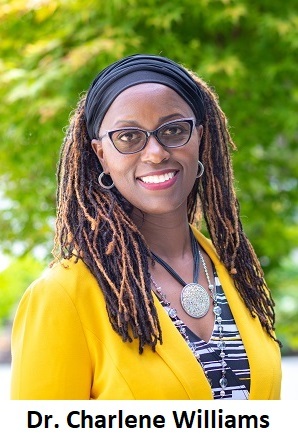|
|
Oregon Achieves... Together!
A Message from the Director of the Oregon Department of Education, Dr. Charlene Williams

As we close out December and head into the new year I want to thank everyone I’ve met with, listened to, exchanged ideas with and learned from over the past many months as I’ve visited students and educators throughout the state.
My most important mission when meeting with students, teachers and administrators is listening to their needs and identifying how the Oregon Department of Education can help. Your feedback helps us advance the agency’s mission to provide high levels of support and maintain high expectations to ensure academic excellence for all of our students.
As I’ve toured Oregon, I’ve met so many determined problem solvers, empathetic leaders and inspiring students in Ontario, Culver, Juntura, Harper, Vale, Eugene, Portland and Oregon Trail school district and elsewhere.
In August I participated in the 6th annual Semana Binacional de Educación, a celebration of the Oregon - Mexico teacher exchange program that provides more authentic learning experiences for staff and students and amplifies the importance of multilingualism for our scholars.
|
|
|

Teachers, school staff and administrators are the heart and soul of Oregon schools.
As you welcome students and staff back to the classroom, whether from school closure or holiday breaks, the experiences of the past several years come to the front of my mind, as they may yours as well. Prioritizing classrooms and school communities where students and staff feel safe, cared for, and connected to you, and each other, is how we foster learning.
As we've all learned, returning to school from a prolonged school closure is complex, especially when it's unexpected. As with reopening schools in 2021 and 2022, each of you has developed tools, supports, systems and ways to communicate with school staff and communities that provide a reliable foundation to help staff, students and families through transitions. As you observe staff, students and families experiencing a range of emotions, everything from stress and worry to excitement, we encourage you to draw on the layers of tools that you’ve leaned on in the past. Know too, that your colleagues across the state are both a resource and are interested in learning from you.
More about supporting and promoting mental health...
|

Every November and December, public school students, parents, teachers and administrators face the difficult task of acknowledging the various religious and cultural holiday traditions celebrated during that time of year. While there are appropriate educational benefits to teaching about the diverse religious traditions and cultures of our country, school officials must be thoughtful about being inclusive and ensure they do not give students the impression that one set of holidays or beliefs is more important or more acceptable than others.
Be accurate and sensitive
Religious and cultural holidays offer excellent opportunities to teach about culture, religion and their historical importance.
More about winter holidays...
|

The Oregon Department of Education would like to share a critical resource to help school districts respond to an opioid overdose emergency on or near a school campus. The Oregon Health Authority’s Save Lives Oregon initiative is offering school districts free opioid overdose reversal kits through its Harm Reduction Clearinghouse. Each middle and high school is eligible to receive up to three opioid reversal kits. Each kit includes instructions, emergency medical supplies, and the opioid antagonist Naloxone. Naloxone reverses an opioid overdose giving time for emergency medical services to arrive. This is a crucial step in providing school staff with the resources necessary to respond to an opioid overdose on or near a school campus.
More information on ordering the kits...
|

Last month, the St. Paul School District (in Marion County, south of Newberg) passed a bond measure that got a boost from the Oregon School Capital Improvement Matching (OSCIM) Program. Commitments are made to districts ahead of the election so districts can inform their communities of the potential for additional funds from the state if the local bond passes. In the case of St. Paul, the district’s $3,000,000 local bond was matched by another $3,000,000 in an OSCIM grant.
Before submitting an application for the OSCIM Program, districts must also submit a Facilities Assessment and Long-Range Facility Plan. Districts are awarded grants based on their position on the Priority List or First in Time List.
Since the first round of grants in 2016, the OSCIM program has awarded more than $413 million in matching funds that added to $6.8 billion in bonds approved by voters.
|
|
|
|
|
|
|
|
|
|